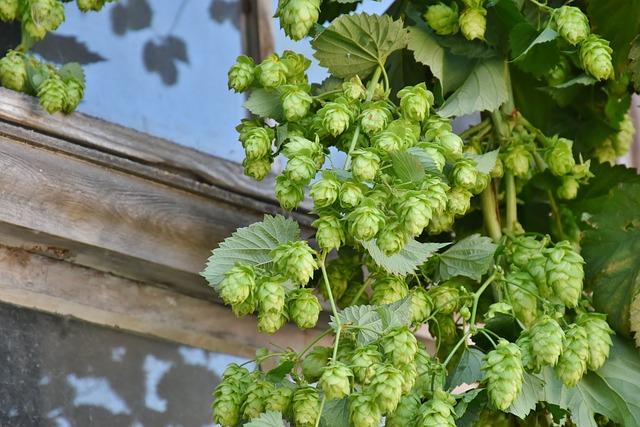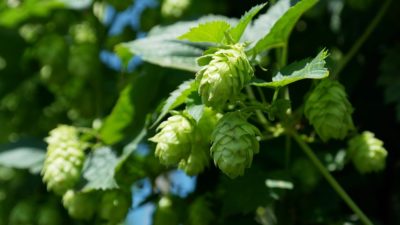With the popularity of home brewing and craft beers on the rise, there is an increasing interest among home gardeners in growing their own hops. Since the hops plant is a large, aggressively growing vine, many hold to the belief that it can only be grown by those with enormous, sprawling properties. With a little creativity and adventure, however, it is possible to grow this bitter plant just about anywhere – even indoors.
But if you’re up to the adventure, here are some tips for growing your own hops – indoors.
Getting Your Rhizomes
While it is possible to grow a hops plant from seed, it is not the best strategy. This is because there are both male and female hops plants – and since only the females produce flowers, growing from seed means you will only have a 50 percent chance that the plant will produce that critical ingredient for your home-brewed IPA.
A much better plan is to purchase some female rhizomes from a reputable nursery.
Select Your Growing Location and Container
Keeping in mind that your hops plant is going to take up a lot of room once it starts growing, you will want to select a location with plenty of space near a large window where it will get a lot of sunlight.
Looking For Non-GMO Seeds? Get Them From A Company You Can Trust!
Your container should be at least 20 inches in diameter and have good drainage. Fill the container with planting mix. Since hops is a climbing plant, insert stakes that are six- to eight-feet tall.
Because hops can easily grow more than 20-feet tall — and can grow a foot per day at their peak — keep in mind that your plants will outgrow your garden stakes. In order to deal with the overgrowth, you can either insert screw-in hooks on the ceiling above and allow them to hang, or train them to grow upwards and along the window frame. Alternatively, it is also OK to let them dangle back down to the floor once they have reached the top of the stake.
Watering and Feeding Your Plant
Hops tend to be very hungry and thirsty plants, so you must be prepared to water and fertilize regularly. It is important, though, not to overwater when the plants are young, as this can cause root rot. If you are growing hops indoors, the limited size of the container means that they will eat up the nutrients very fast. To counter this, use a liquid- or slow-release granular fertilizer. Water your plants daily or whenever the soil becomes dry.
Harvesting Your Hops
To know if your hops flowers are ready for harvesting, do the pinch test. The hops should have a somewhat papery feel to them and should be starting to turn slightly brown. You may use your hops right away or store them in the fridge or freezer.
Should you notice that your plant is developing additional unwanted shoots, you can cut these back and even eat them. These shoots can be enjoyed raw or sautéed with butter. Hops shoots are considered a delicacy in Europe and a kilogram (about two pounds) of hops shoots can command a price of over $1,200 – which easily makes them the world’s most expensive vegetable!
Using Your Hops
The most popular use for hops cones, of course, is for the bitter flavor that it gives to beer. But this plant has a number of other uses that you might want to explore. As noted, hops shoots may be eaten as a vegetable; their flavor is similar to a cross between asparagus and spinach.
Hops may also be used in animal feed and may help to protect livestock against illness, as the plant inhibits bacteria growth.
‘Miracle Oil Maker’ Lets You Make Fresh Nut Oils Within Minutes!
The cones also may be brewed into a tea – a popular home remedy for insomnia.
Other Things to Consider When Growing Hops Indoors
Growing hops indoors should be considered more of an experiment and indoor gardening adventure than anything else.
With some patience and diligence, you should be able to harvest enough hops flowers to make a batch or two of your favorite homebrew, but it won’t replace what you can grow outdoors. Over time, indoor plants can become pot-bound, which means that the root system takes over the inside of the container. Once this happens, your plant will not be able to produce very much.
Waste Not, Want Not
When your plant is no longer producing many flowers or you no longer wish to have a 20-foot vine taking up room in your home, you can cut it back – but don’t throw out everything. When you pull up the roots, you should notice thick branchy growths near the surface. These can be cut into four-inch sections that are each capable of starting a new plant.
Use them to begin a new indoor hops vine, or try planting them outside in the spring!
What hops-growing advice would you add? Share it in the section below:
Bust Inflation With A Low-Cost, High-Production Garden. Read More Here.
 Off The Grid News Better Ideas For Off The Grid Living
Off The Grid News Better Ideas For Off The Grid Living





